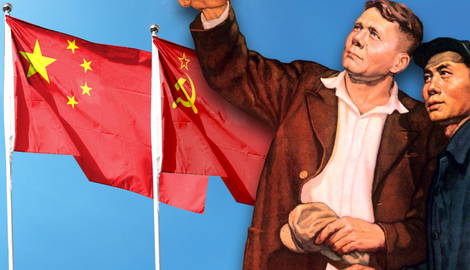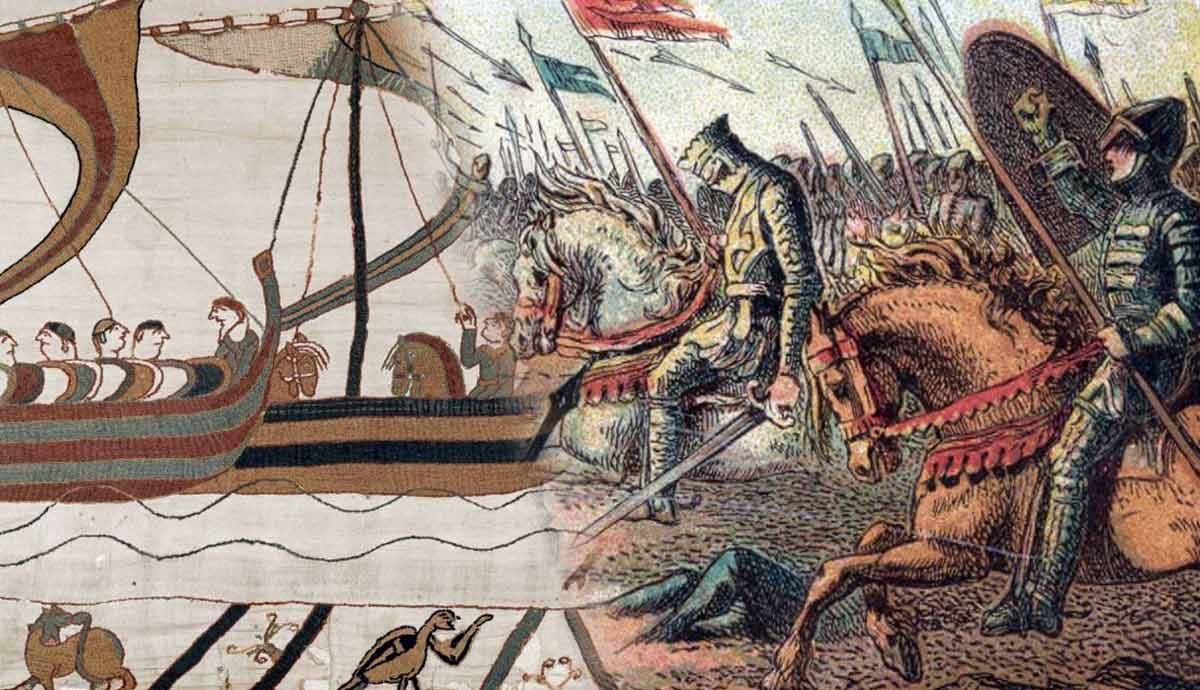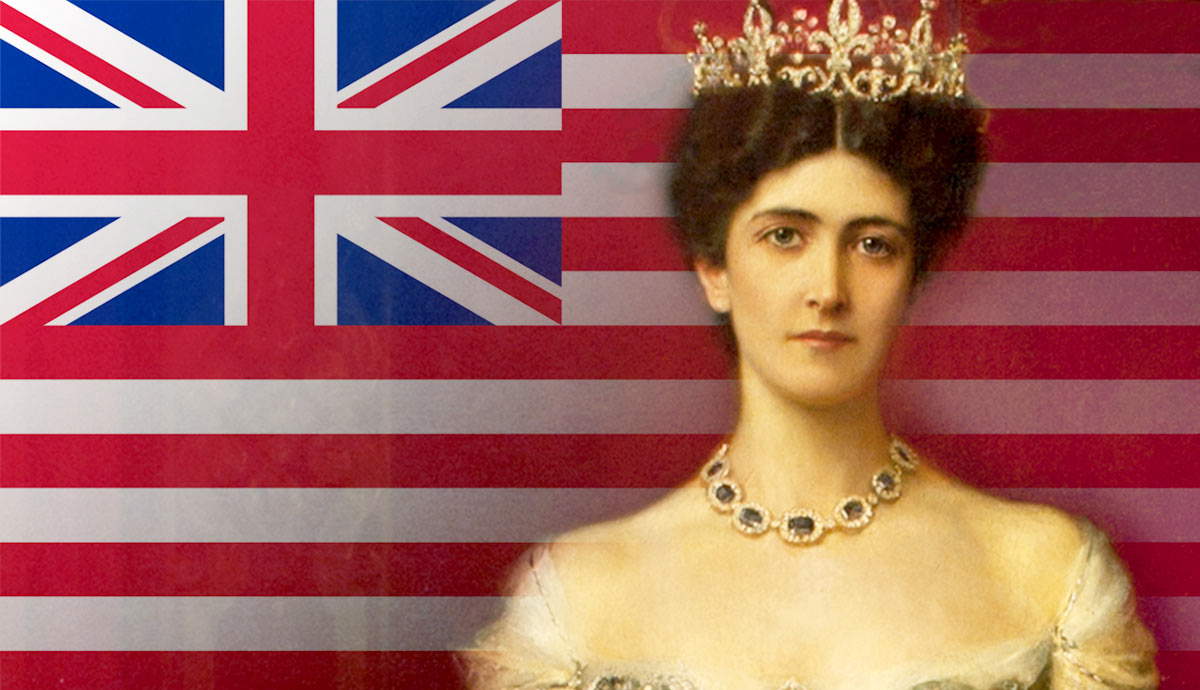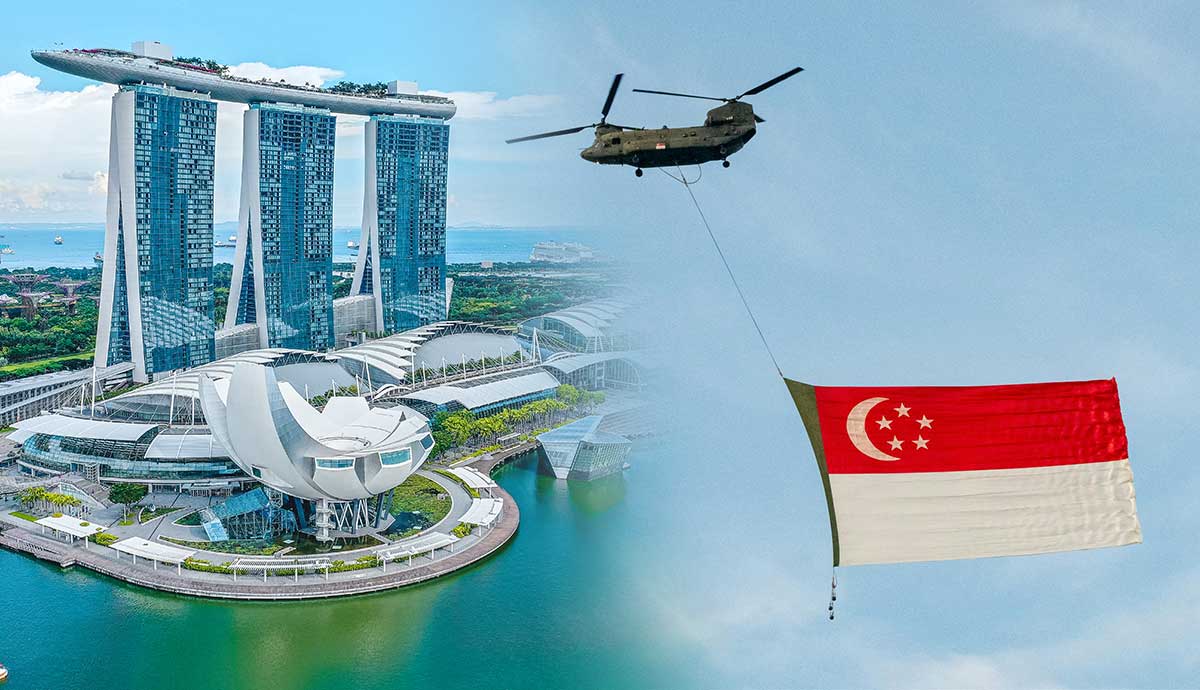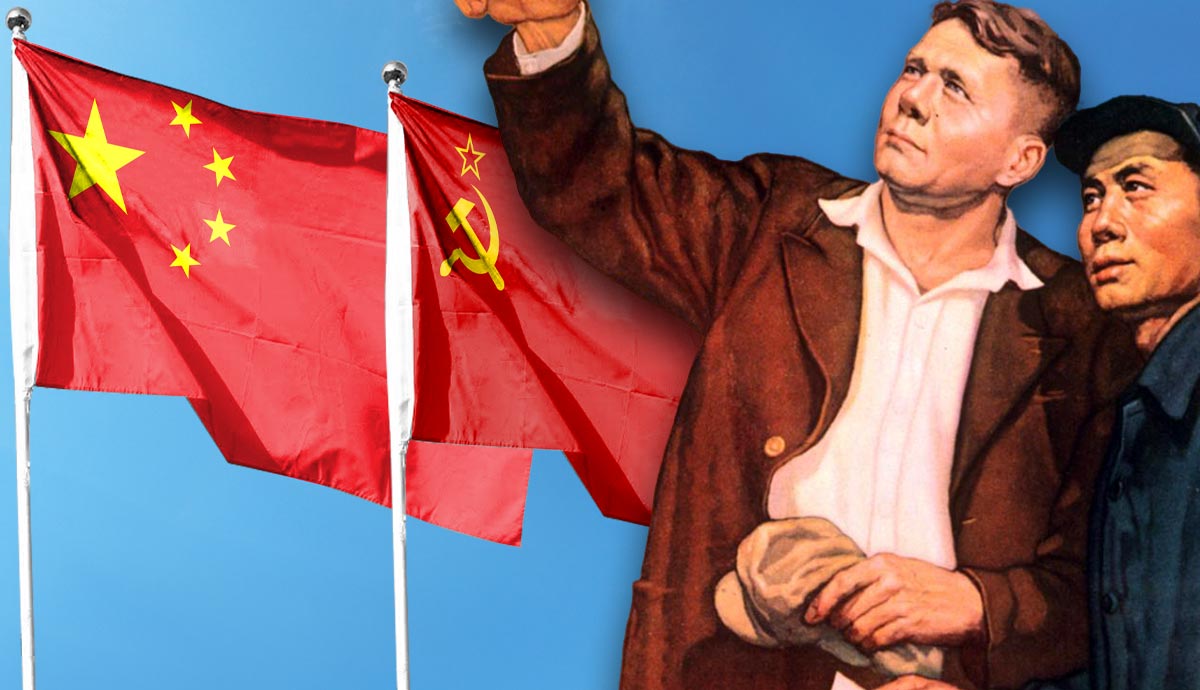
The Cold War became chillier in 1949 when the communists won the Chinese Civil War, giving the Soviet Union a major new ally. During the reign of Soviet Premier Joseph Stalin, “Red China” was a loyal friend to Soviet communism. To help their mostly agrarian ally develop more quickly, the Soviets sent aid, equipment, and technical advisers to China. However, by 1960 the relationship between China and the USSR was growing icy. Nine years later, there was real fear that war might erupt between the two powers, by then both armed with nuclear weapons. How did the two largest communist powers go from friend to foe?
Setting the Stage: Communism in China
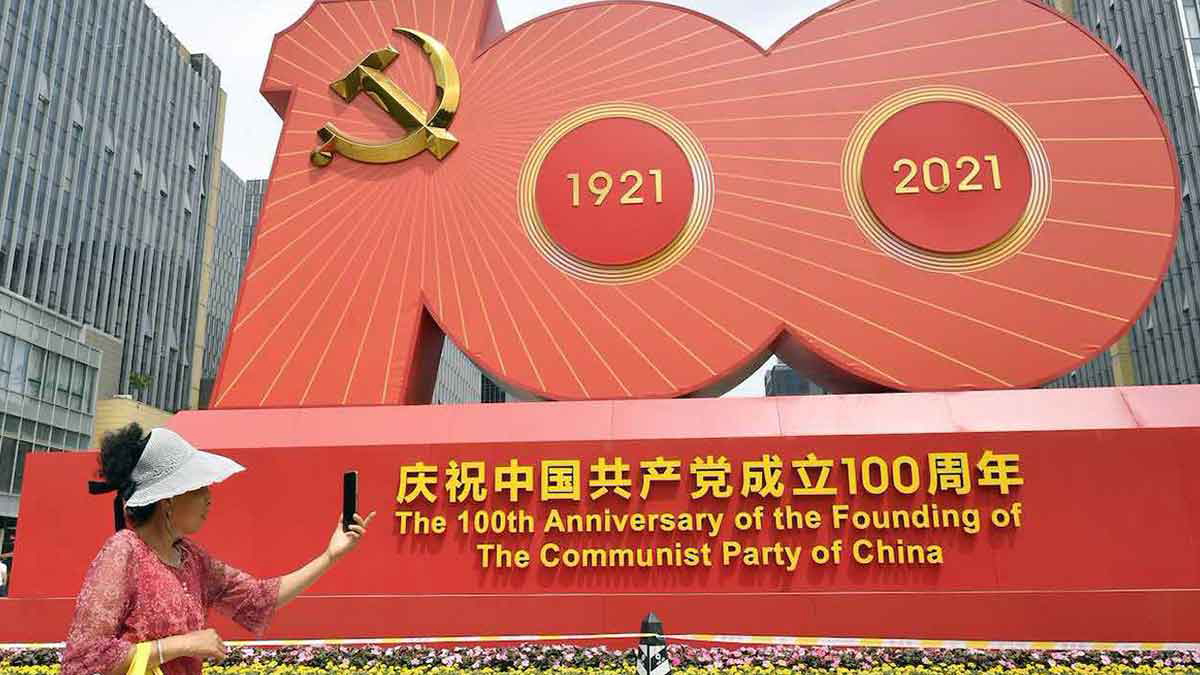
Communism as a modern concept was created in 1848 by political philosopher Karl Marx in Germany with the publication of The Communist Manifesto. In October 1917, the Communist Revolution, also known as the Bolshevik Revolution, and Russian Revolution, erupted in St. Petersburg, Russia. For the next five years, the Russian Civil War raged as Bolsheviks, communist revolutionaries, fought to establish a communist nation-state. By the end of 1922, the Soviet Union had been created, encompassing all of Russia and several smaller bordering states. One of the Soviet Union’s official goals during its early era was the international spread of communism to end the exploitation of the working class.
China, which borders eastern Russia, saw the official creation of the Chinese Communist Party (CCP) in July 1921. Since 1918, many intellectuals in China had been following the events of the Russian Civil War and preceding Bolshevik Revolution, and in April 1920 a representative from Comintern (The Communist International organization of the USSR) first visited China to explore expanding the revolution. The First National Congress of the CCP was held in late July and early August of 1921, and in January and February of 1922 delegates from the CCP attended a Comintern event in Moscow.
Setting the Stage: The Chinese Civil War (1927-49)
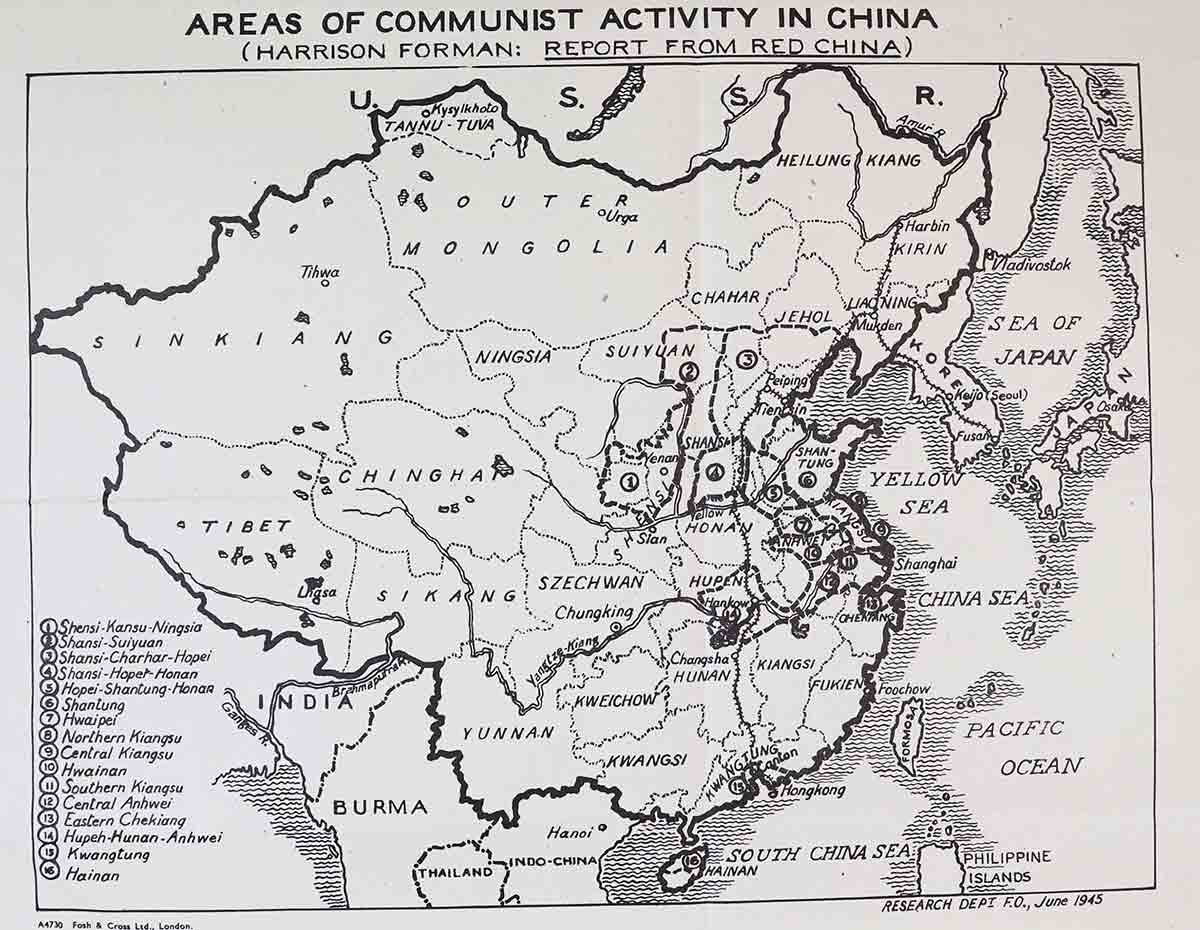
Communism increased in popularity in China, mostly in the northern regions near the Soviet Union. In 1926, the communists entered into an alliance with the Nationalists, led by General Chiang Kai-Shek, to restore order in rural areas dominated by local warlords. The Nationalists broke this alliance the following year and turned on the communists, sparking the Chinese Civil War. Four years later, the Japanese invasion of Manchuria (northeastern China) after the “false flag” Mukden Incident brought about a short-lived truce between the Nationalists and the Communists.
Unfortunately, the Nationalists continued to use resources initially marked for halting Japanese expansion against the Communists. The Communists gained popularity during World War II as they were considered to more actively fight the Japanese than Chiang Kai-Shek, whose wartime performance was strongly criticized by American general Joseph Stilwell. After World War II ended, the Chinese Civil War resurged with a vengeance now that a truce between the two factions was no longer necessary. Although the Nationalists received aid from the United States, the Communists enjoyed strong public support outside the major cities and were able to seize much abandoned Japanese equipment and weaponry in Manchuria.
1949-53: Soviet Aid to “Red China” Under Stalin
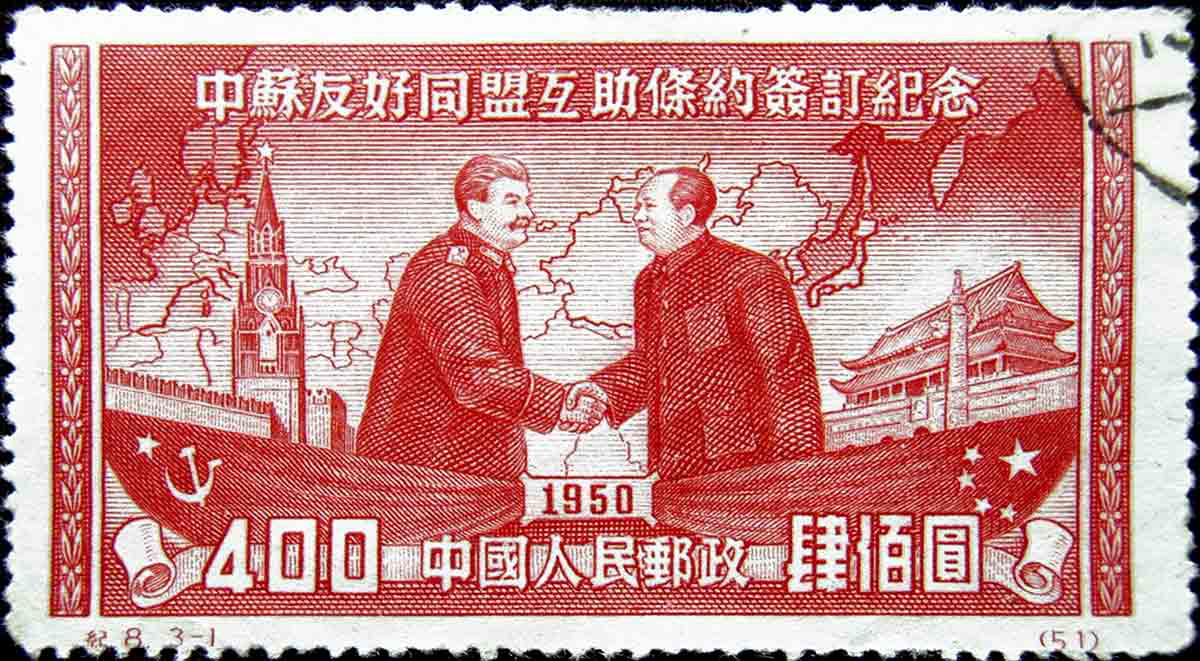
In October 1949, the Communists seized power in Beijing and the Nationalists fled to the island of Formosa, which they renamed Taiwan and declared themselves the Republic of China (ROC). The People’s Republic of China (PRC), often known as “Red China” in the West, had won the Chinese Civil War with copious amounts of aid from the neighboring Soviet Union. Many blamed the administration of US President Harry Truman for “losing” China to communism. In less than a year, North Korea’s invasion of South Korea heated up the Cold War, with Communist North Korea backed by the Soviet Union and Red China and South Korea backed by the United States and Britain.
The Korean War, which lasted from June 1950 to July 1953, saw the Soviet Union encourage Chinese aid of North Korea, which directly bordered Manchuria. While Soviet dictator Joseph Stalin provided “volunteer” fighter pilots to aid North Korea, the Chinese sent almost a million ground troops in autumn 1950 when U.S. forces approached the Yalu River border between North Korea and China. The lack of stronger direct Soviet support for North Korea, and relying more on Chinese manpower, may have initiated tensions between the two communist powers.
1954-59: Soviet Aid to “Red China” Under Khrushchev
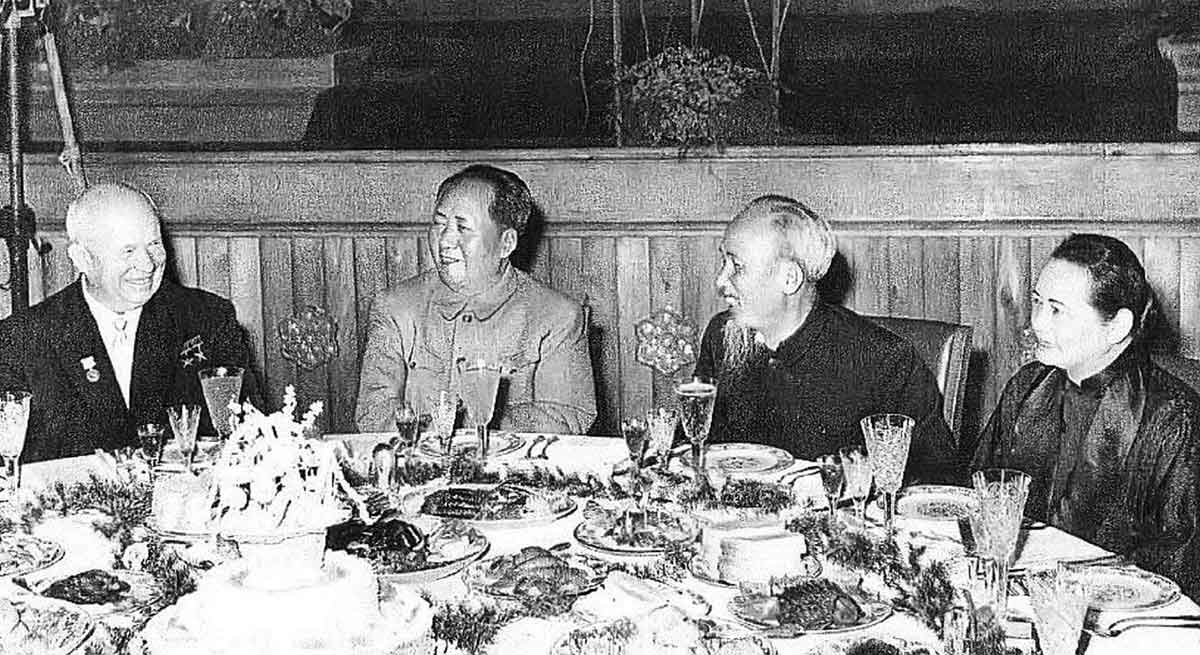
Joseph Stalin passed away shortly before the end of the Korean War, after the front had stabilized at its current border known as the Demilitarized Zone—or DMZ—between North and South Korea. His eventual successor, Nikita Khrushchev, continued Soviet support for Red China. Khrushchev visited his Chinese counterpart, Communist revolutionary leader Mao Zedong, in China (Mao had previously gone to the USSR to visit Stalin). Since the death of Stalin, however, a new type of technological aid presented complications: nuclear energy.
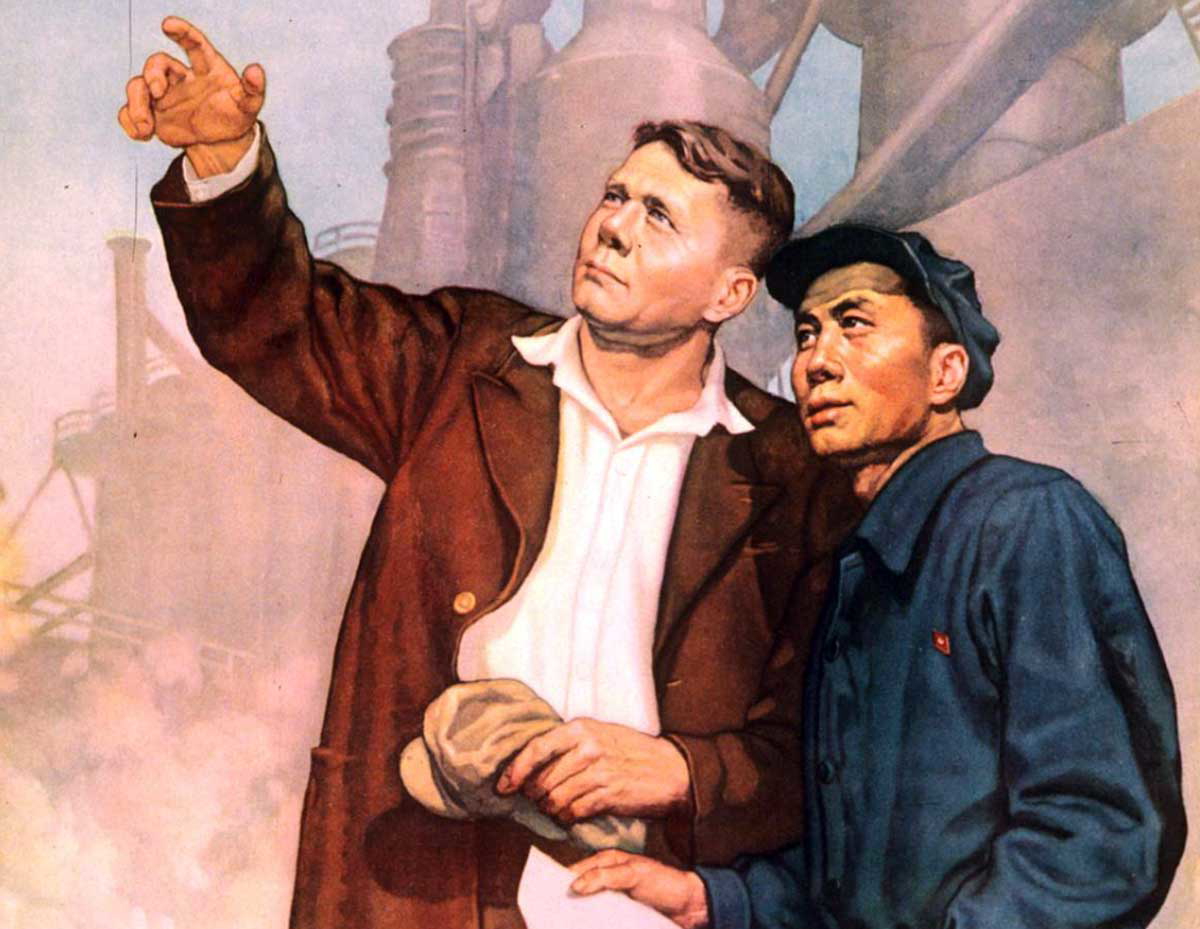
Initially, the Soviets helped the Chinese with nuclear research, ostensibly for peaceful purposes. By 1957, Mao was demanding assistance with nuclear weapons research, which the USSR provided with a single sample bomb and its data. Despite having signed a Treaty of Friendship and Alliance in 1950 that was to last for thirty years, the two communist powers quickly had their differences over this nuclear cooperation. As China grew and developed, thanks largely to trade with the Soviet Union and economic aid from the same source, a power struggle emerged. Was the USSR providing enough aid in good faith, and did China have to blindly accept its neighbor’s policies?
The Sino-Soviet Split
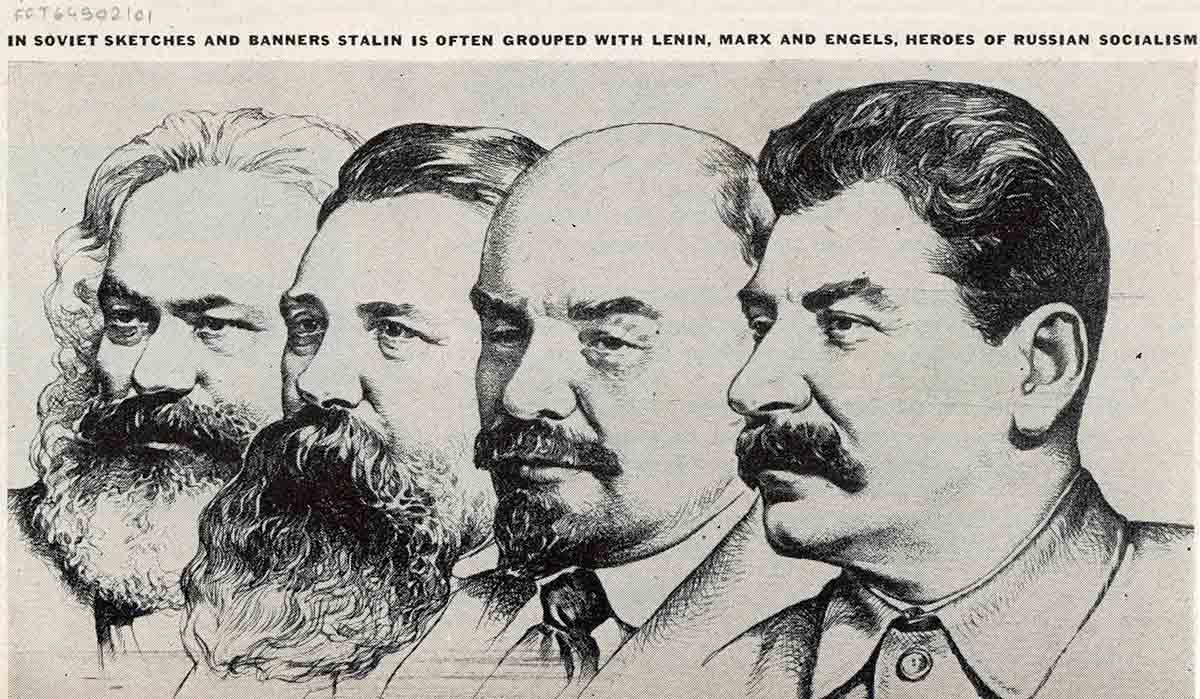
By the late 1950s, a rift was growing between Soviet and Chinese philosophies about international communism and engagement. The USSR was more technologically advanced, urbanized, and integrated into trade with the West. The Khrushchev Thaw had led to warmer relations with the United States and Britain, whose involvement in the Korean War and imperialist pasts upset many Chinese leaders. Additionally, Khrushchev’s policy of de-Stalinization upset Mao, who had viewed Stalin as a powerful ally. As the Soviet Union liberalized under Khrushchev, China believed that it was abandoning the principles of Marxism.
Thus, Mao embarked on the Great Leap Forward, where he pursued mass industrialization. This was an economic failure and a humiliation for the rising power, and likely deepened the rift with the Soviet Union. Mao had intended the program to achieve true communism before the Soviet Union, but instead sparked mass starvation as farmers had been diverted to ill-planned, small-scale industrial projects that generated little output. In 1960, the Sino-Soviet Split formally occurred at the Moscow conference of world communist parties, where China and Albania argued that the USSR had given up “class struggle.”
1960-69: Growing Tensions Between USSR and China
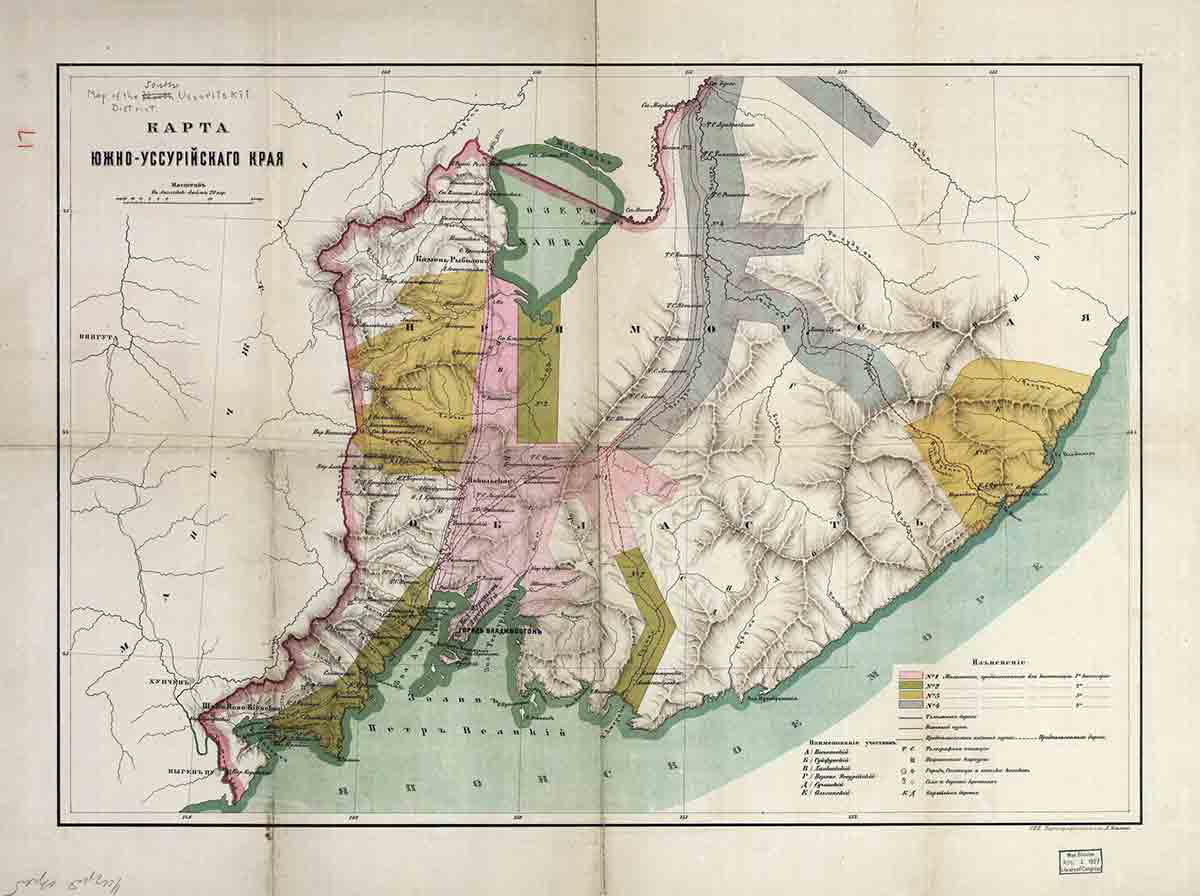
The split widened during the 1960s, with each power blaming the other for violating the true principles of Marxism. Each disagreed with the others’ foreign policy decisions in the early 1960s, with China viewing the USSR as weak during the Cuban Missile Crisis and the USSR criticizing China’s actions during the 1962 Sino-Indian War. China, which was actively working on building its first nuclear weapons, saw Soviet agreements with the West on nuclear weapons controls as a betrayal. Although Khrushchev was removed from power in the Soviet Union in 1964, the Chinese did not view his successor, Leonid Brezhnev, as a true Marxist either.
Both powers supported communist North Vietnam during the Vietnam War, though more support came from the Soviet Union. Their disagreement over Vietnam War policy widened the rift further, and by 1969 the two communist powers were even on the brink of war themselves. Allegedly, the Soviet intervention in Prague, Czechoslovakia in 1968 frightened Mao, who believed that the USSR might attack other communist nations… even his own. In March 1969, Soviet and Chinese border guards began shooting at each other along the Ussuri River between Chinese Manchuria and Soviet Siberia.
1969-1970s: Sino-Soviet Split Leads to Détente
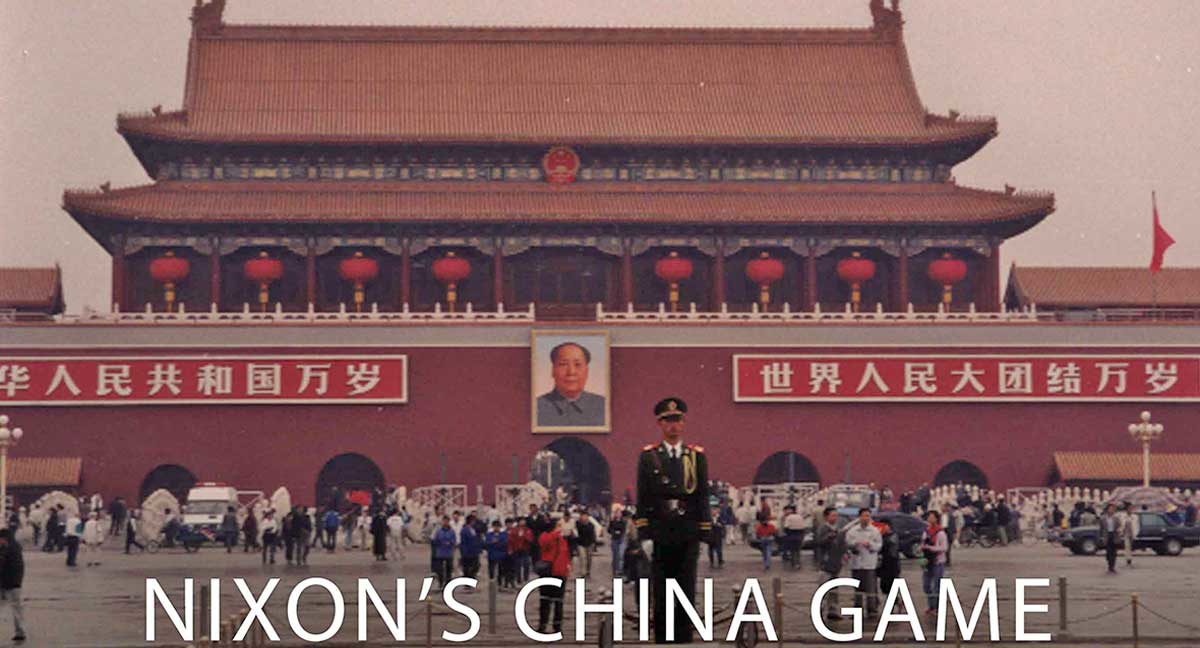
The border conflict between China and the Soviet Union presented a Cold War opportunity to the United States, which could play the two powers against each other. New US President Richard Nixon, elected in 1968, continued the Vietnam War but began reaching out to communist China. The Soviets, aware of this and fearing increased international support for Red China, pursued warmer relations with the US as well. This began the era of détente, or warmer Cold War relations between the Soviet Union and the West. Fearing that China could aid the West in a potential conflict with the USSR, the Soviets wanted to avoid such a conflict.
In February 1972, Nixon famously visited Mao Zedong in Beijing to re-establish diplomatic relations. Most international recognition of China switched from the Republic of China (Taiwan) to the People’s Republic of China, reducing use of the term “Red China” to differentiate the two. Nixon went on a foreign policy hot streak, ending US involvement in the Vietnam War a year later and signing arms reduction treaties with the Soviet Union. Due to continued poor relations with China over the shared border during the 1970s, the Soviets wanted to maintain diplomatic support from the West.
End of Cold War: USSR and China Re-Establish Relations
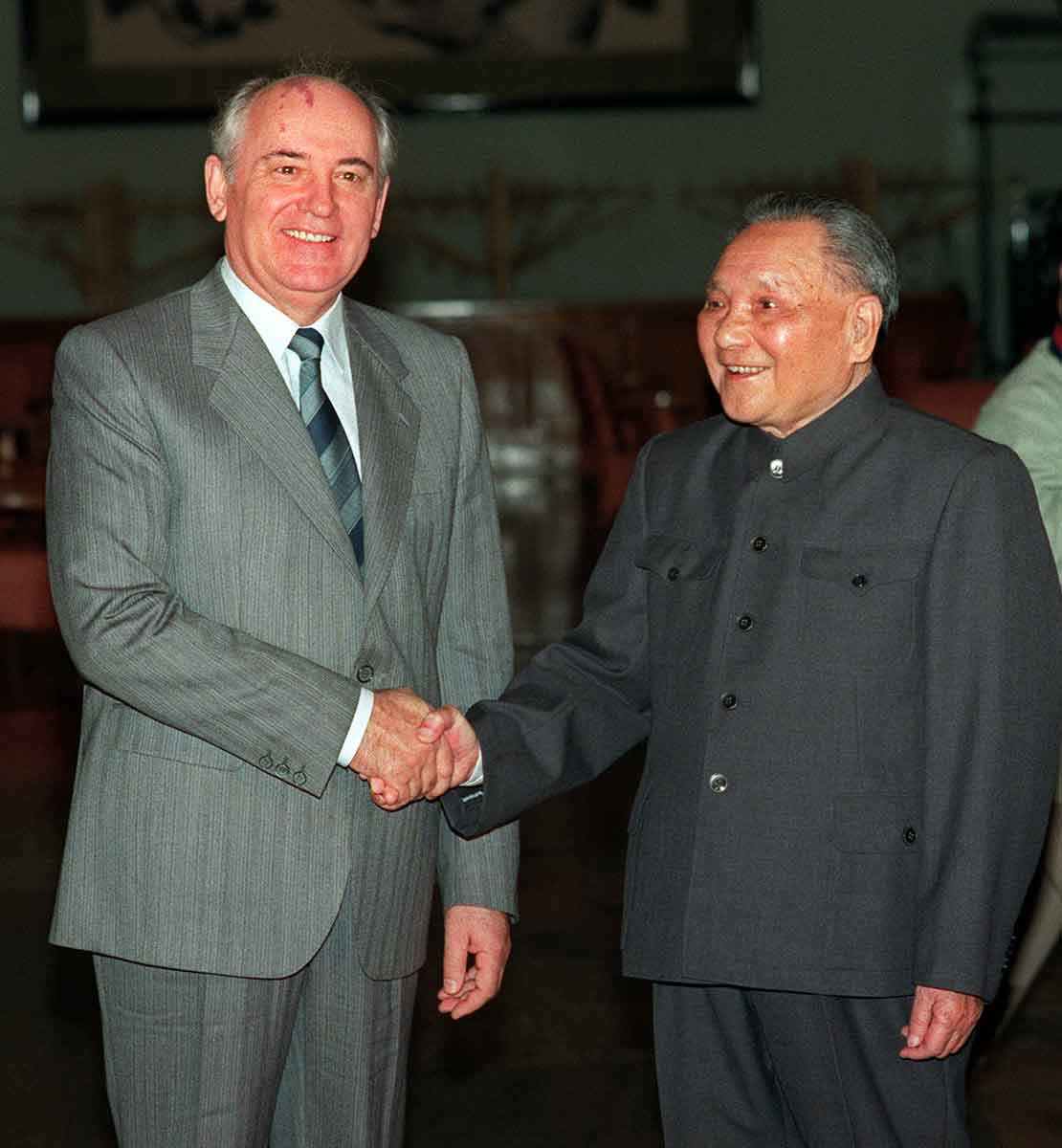
The Cold War re-chilled in December 1979 with the Soviet invasion of Afghanistan, ending detente. At the same time, China began opening up to foreign investment under Premier Deng Xiaoping. Roughly six years later, the Soviet Union began to follow a similar path with the emergence of Premier Mikhail Gorbachev. Under Gorbachev, the Soviet economy relaxed restrictions on private ownership and foreign investment with its Glasnost and Perestroika reforms. In May 1989, Gorbachev visited China, becoming the first Soviet leader to do so since the Sino-Soviet Split of 1960.
However, during Gorbachev’s summit came a sharp break in strategies on how to handle public calls for democracy: while the USSR continued to allow democratic reforms, China quashed its own reform movements with the infamous Tiananmen Square Massacre. Gorbachev’s visit improved Soviet relations with China, but the accompanying media took an increased interest in the actions of the Chinese government. The violent repression of protesters by the Chinese military met with condemnation from the US government and sanctions were put in place.
Post-Cold War: China Torn Between West and Russia
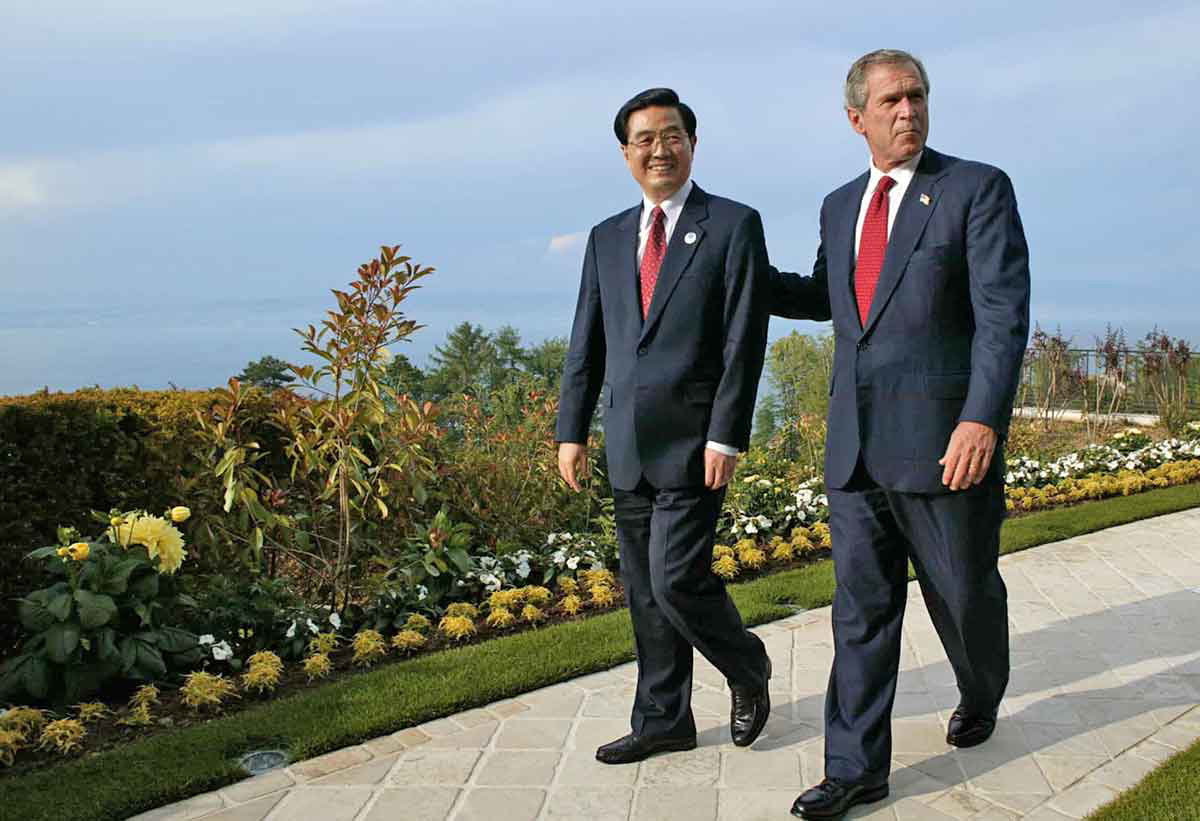
Although Gorbachev’s policy of nonviolence toward democratic reformers was praised by the West, the Soviet Union ultimately collapsed two years later. China, meanwhile, retained its firm insistence on one-party rule. During the 1990s, the two Asian powers saw their fortunes reverse: Russia, successor state of the USSR, faced a faltering post-Soviet economy while China enjoyed rapid economic growth due to international trade. However, China’s strict maintenance of Communist rule clashed with Western desires for multi-party democracy.
Since the early 2000s, China has been considered a rising superpower and became the 2nd largest economy in the world in 2010, surpassing Japan. Economically, it desires strong trade ties to the West. Politically, it remains closer to authoritarian Russia and communist North Korea. This dichotomy has created tension and left China torn between its pro-(Soviet) Russia past and a pro-Western (economic) future. True to its Communist roots, China has long criticized the West for colonialism and economic exploitation, making it difficult to embrace the West. Thus, Russia is often seen as a valuable sociopolitical counterweight.
Modern Challenges: Russo-Ukrainian War and North Korea’s Nuclear Weapons
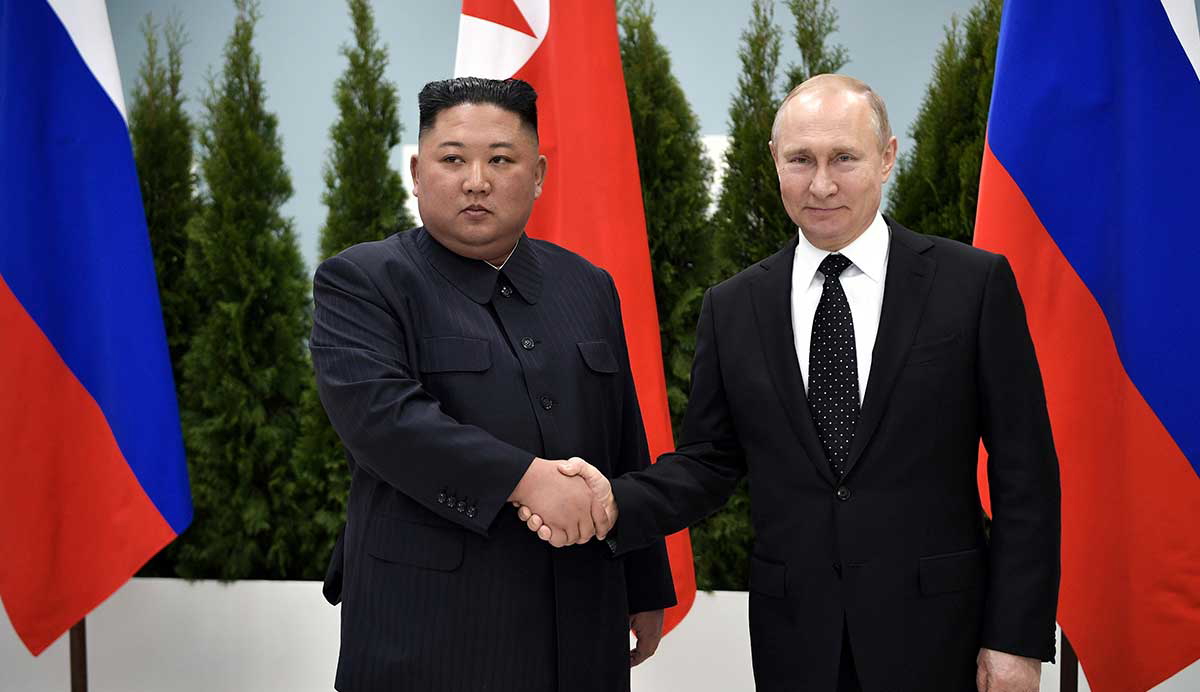
Since 2014, tensions between the West and Russia have surged following the Russian annexation of the Crimean Peninsula in Ukraine. Similarly, continued North Korean nuclear weapon and missile tests have increased tensions as well. In February 2022, these combined tensions soared further with the Russian invasion of Ukraine, starting the Russo-Ukrainian War. North Korea has announced its support for Russia, while China has tried to hedge on its support to maintain trade ties with the West. The West has accused China of aiding Russia in the war, threatening trade ties further in light of increased scrutiny of the effects of low-cost Chinese exports on domestic economies.
The West has encouraged China to break with Russia and North Korea and apply diplomatic and economic pressure to end their aggressions. Thus far, China has avoided taking a firm stance. Although China has criticized some North Korean nuclear actions, and joined with some United Nations resolutions to apply economic sanctions on the Communist state, it is debatable how firmly China upholds its implementation of these sanctions on its historic ally. The Sino-Soviet Split likely aided the peaceful resolution of the Cold War by preventing an unstoppable Communist alliance, and may help keep the peace today by preventing China from fully allying with Russia in the current war in Ukraine.
